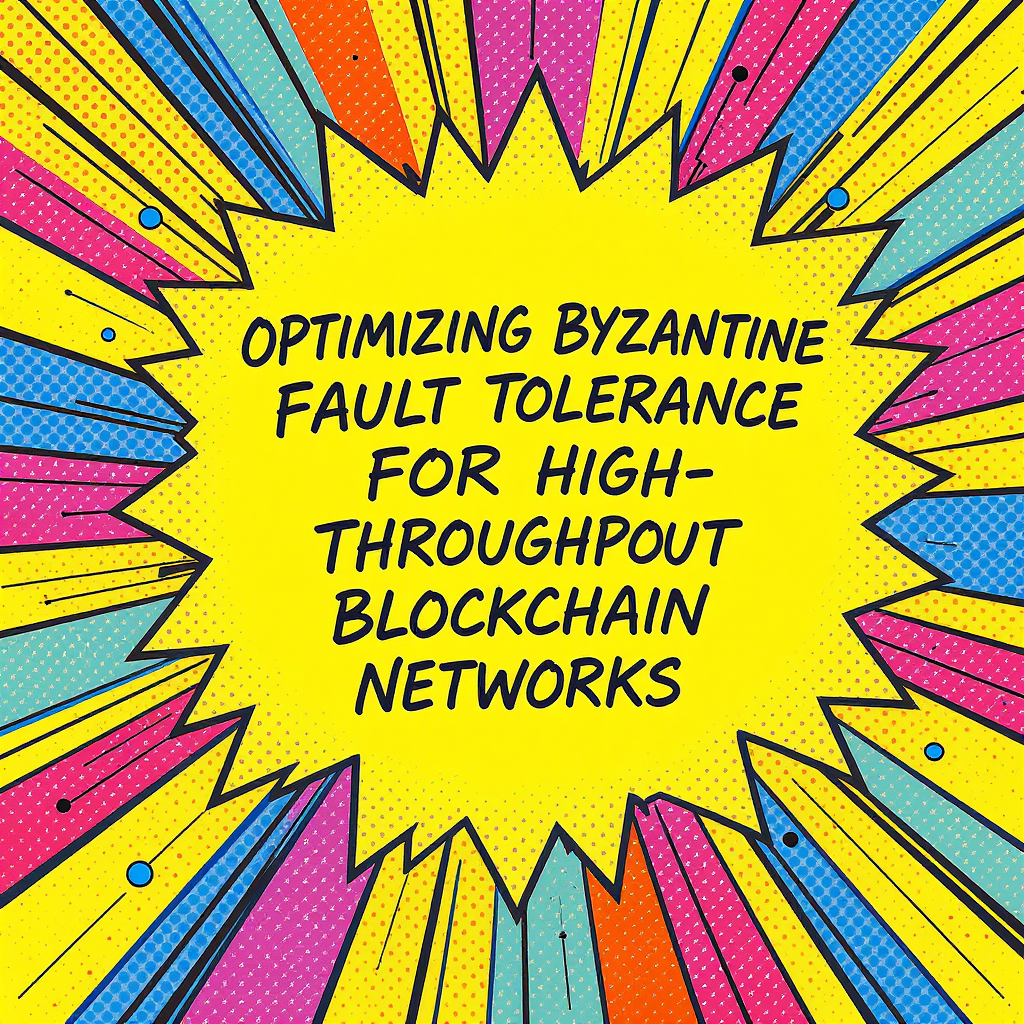The scalability of blockchain networks is a critical challenge hindering widespread adoption. Byzantine Fault Tolerance (BFT) mechanisms, essential for ensuring the security and integrity of distributed ledgers, often become a bottleneck as transaction throughput increases. This article explores strategies for optimizing BFT algorithms to improve the performance of high-throughput blockchain networks. We will delve into techniques focusing on reducing communication overhead, enhancing consensus speed, and leveraging novel architectural approaches. The discussion will cover practical considerations, trade-offs between security and performance, and future research directions in this rapidly evolving field. We will examine how different BFT protocols fare under high-throughput scenarios and highlight promising avenues for improvement. Ultimately, the goal is to bridge the gap between the security guarantees provided by BFT and the need for scalability in real-world blockchain applications.
Improving Consensus Speed
Traditional BFT algorithms, like Practical Byzantine Fault Tolerance (PBFT), suffer from significant latency as the number of nodes increases. The linear increase in message exchanges for each consensus round directly impacts throughput. To address this, several optimizations can be implemented. One approach is to reduce the number of communication rounds required for consensus. Techniques like optimized leader election schemes and asynchronous communication protocols can minimize latency. Furthermore, employing parallel processing for verification and consensus steps can significantly improve throughput. This can involve distributing the workload across multiple cores or nodes, reducing the overall processing time for each transaction.
Reducing Communication Overhead
Communication overhead is a major factor limiting the scalability of BFT-based blockchains. The sheer volume of messages exchanged during consensus can overwhelm the network, especially under high load. Several techniques aim to mitigate this issue. State sharding, which partitions the blockchain’s state among different subsets of nodes, reduces the number of nodes participating in each consensus round, thus lowering communication demands. Another approach is to employ efficient data structures and message compression. Techniques like Merkle trees or other cryptographic hashing methods can significantly reduce the size of messages exchanged, improving overall network efficiency. Furthermore, careful design of message formats and protocols can minimize redundant data transmission.
Exploring Novel Architectural Approaches
Beyond algorithmic improvements, novel architectural approaches offer significant potential for enhancing the throughput of BFT-based blockchains. Layered consensus protocols that combine different BFT algorithms at different levels of the network hierarchy can provide a hybrid solution, balancing security and scalability. For instance, a faster, less secure consensus mechanism could be used for less critical transactions while reserving a more robust BFT algorithm for high-value transactions. Moreover, the use of directed acyclic graphs (DAGs) instead of linear chains for transaction ordering provides a potential alternative to traditional BFT, offering higher throughput. However, DAG-based approaches often present unique challenges regarding security and consistency.
Trade-offs and Practical Considerations
Optimizing BFT for high-throughput networks involves navigating a complex landscape of trade-offs. Increasing throughput often comes at the cost of security or latency. For example, aggressive sharding can reduce communication overhead but also increases the risk of a single shard being compromised. Similarly, using faster, less secure consensus algorithms might improve throughput but leaves the network more vulnerable to attacks. Therefore, careful consideration must be given to the specific requirements of the application and the acceptable level of risk. This includes conducting rigorous security analysis and stress testing to evaluate the performance and resilience of optimized BFT implementations under realistic conditions. Furthermore, the choice of hardware and network infrastructure plays a vital role in determining the achievable throughput. Efficient hardware and low-latency networks are crucial for maximizing the benefits of optimized BFT protocols.
Conclusion
Optimizing Byzantine Fault Tolerance for high-throughput blockchain networks is a multifaceted challenge requiring a multi-pronged approach. We have explored several strategies, including enhancing consensus speed, minimizing communication overhead, and adopting innovative architectural designs. These techniques, such as optimized leader election, state sharding, and the use of layered consensus protocols, all contribute to achieving higher transaction processing rates. However, it’s crucial to acknowledge the inherent trade-offs between security, scalability, and latency. The ideal solution involves carefully balancing these factors based on the specific application requirements. Future research should focus on developing more sophisticated algorithms and architectural improvements that further enhance BFT’s performance while maintaining its crucial security guarantees, paving the way for truly scalable and secure blockchain networks capable of handling the demands of large-scale adoption. The development of new consensus mechanisms and the continued refinement of existing ones will be key to achieving this goal.
References:
- Byzantine Fault Tolerance in Blockchain Systems
- High-Throughput Blockchains: A Survey
- Practical Byzantine Fault Tolerance
Image By: Black Forest Labs






